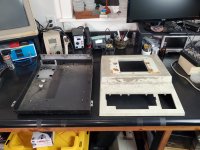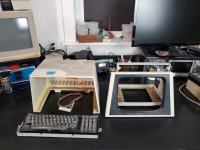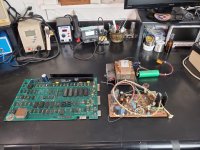Mike Brixius
Experienced Member
This machine came to me from a friend and my plan is for a full restoration. Since this is my first pet (And first post here after lurking for ages) I thought I should lay out my battle plan and see what the experts suggest
It came from the Alameda Unified School District in California and has been in storage for decades. The outside is not terrible barring the missing label and some broken keys (I have the label and a key coming but will have to find parts to repair some others)
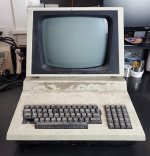
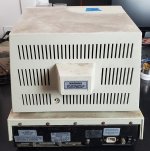
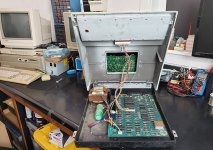
Inside there is a LOT of rust so I'll skip the smoke test and go straight to restoration.
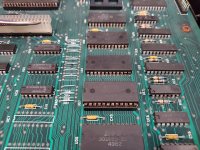
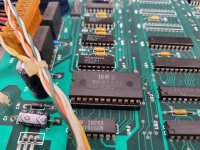
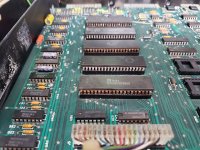
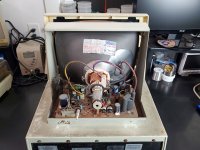
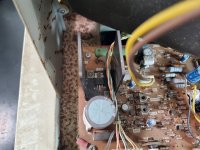

The battle plan...
Run the board through an ultrasonic cleaner (I think it will fit in 2 passes).
Remove all the socketed chips and clean with a scratch pen.
Remove any corroded chips so they can be cleaned and socket them.
Clean and test the transformer and coat it to prevent further rust.
Replace the rusty VR... Or
I usually try to keep as original as possible but on this one I am leaning towards just replacing the Electrolytic caps, Bridge Diodes and Voltage regulators
Reform the large cap.
Clean the case and remove rust then either touch up or repaint depending on how it is looking
Clean and recap the VDU board
Clean the keyboard but hold off on conductive paint until I see if it works
Reassemble and start troubleshooting (1000 tiny cuts?)
I have a ROMulator on order but I am guessing that this project will just be getting started with the above
To me it looks doable but will definitely require a few level ups for me.
It came from the Alameda Unified School District in California and has been in storage for decades. The outside is not terrible barring the missing label and some broken keys (I have the label and a key coming but will have to find parts to repair some others)



Inside there is a LOT of rust so I'll skip the smoke test and go straight to restoration.






The battle plan...
Run the board through an ultrasonic cleaner (I think it will fit in 2 passes).
Remove all the socketed chips and clean with a scratch pen.
Remove any corroded chips so they can be cleaned and socket them.
Clean and test the transformer and coat it to prevent further rust.
Replace the rusty VR... Or
I usually try to keep as original as possible but on this one I am leaning towards just replacing the Electrolytic caps, Bridge Diodes and Voltage regulators
Reform the large cap.
Clean the case and remove rust then either touch up or repaint depending on how it is looking
Clean and recap the VDU board
Clean the keyboard but hold off on conductive paint until I see if it works
Reassemble and start troubleshooting (1000 tiny cuts?)
I have a ROMulator on order but I am guessing that this project will just be getting started with the above
To me it looks doable but will definitely require a few level ups for me.




